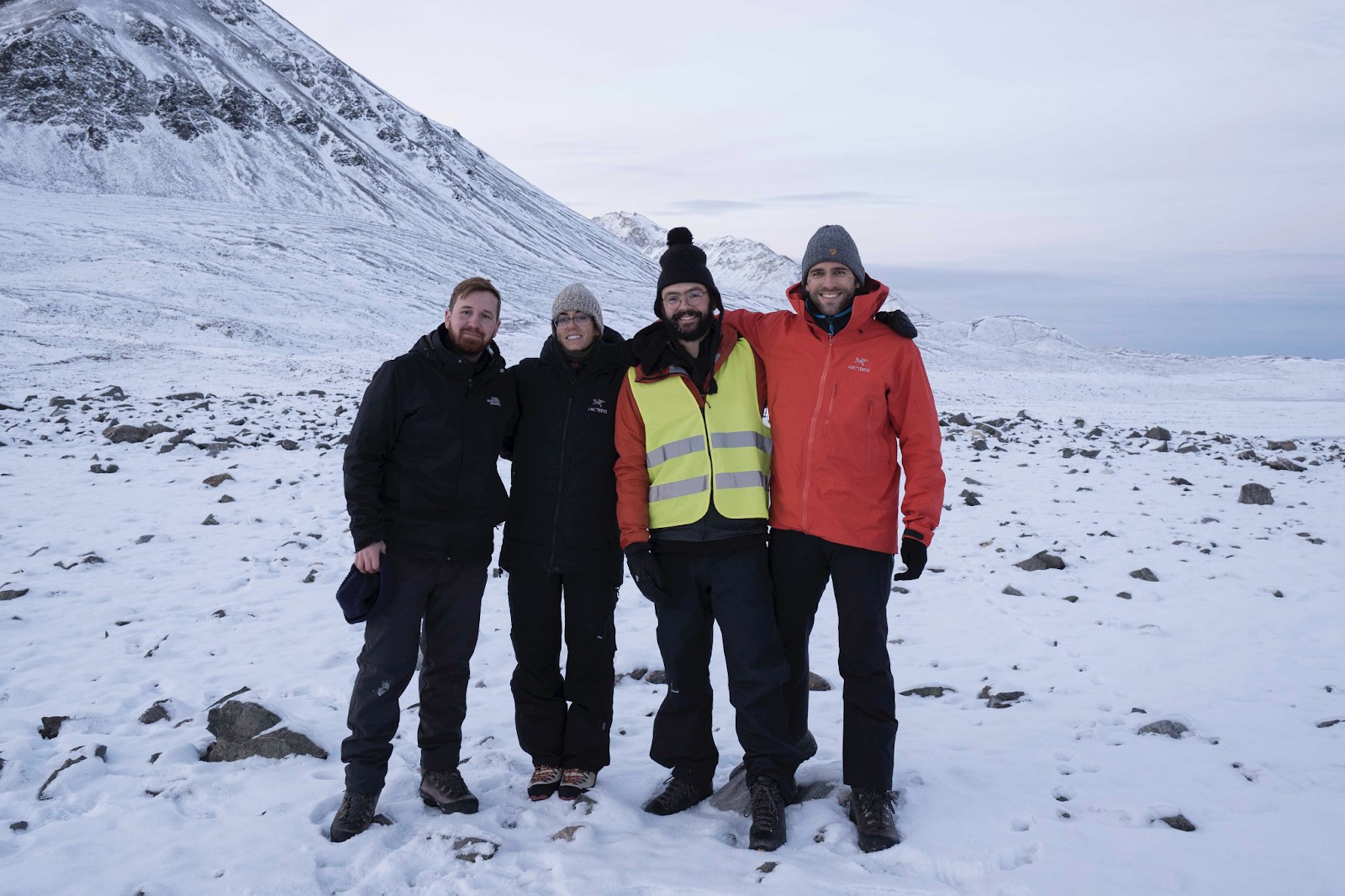Capturing Biogeochemical Processes in Proglacial Soil During the Freezing Period research fieldwork
Dr James Bradley, Senior Lecturer in Environmental Science, recently conducted research fieldwork in the Ny-Ålesund glaciers.

CAP-BIO Field team. Left to right: Mihai Cimpoiasu, Lara Vimercati, Harry Harrison, James Bradley. Photo credit: James Bradley.
Last month, as the last rays of sunlight faded from the sky, the CAP-BIO project team of four researchers arrived in Ny-Ålesund for the SIOS Access Program supported project Capturing Biogeochemical Processes in Proglacial Soil During the Freezing Period (CAP-BIO, SIOS-2019-0011), supported by the Norwegian Polar Institute’s Sverdrup Station.
The primary objective of the fieldwork was to sample soils from the forefield of a retreating glacier in order to characterise the activity of microorganisms in the soil during the summer-to-winter transition period. The team will later extract nucleic acids from the soil to characterise the genes being transcribed from organisms’ DNA blueprint, providing insights into which biological processes are happening whilst the soil freezes solid and darkness falls.
The onset of autumn freeze-up limits biological activity because temperatures fall below zero, and liquid water becomes scarce. However, recent studies have shown that biological activity may persist year-round, despite the harsh environment. Nevertheless, the seasonal dynamics of Arctic soil ecosystems are barely beginning to be explored, in part because of logistical challenges associated with accessing field sites during the permanently dark period.
The results of the project will contribute to understanding the future of Arctic soils exposed by glacier retreat, and the role the long polar night plays in that future.
Research project background
Arctic warming has led to the widespread retreat of glaciers and emergence of pioneer soils. Knowledge of how soils develop following glacier retreat is critical to understanding interactions between soil and its biological constituents, predicting future climate feedbacks, interpreting physical and chemical records in the soil, and constraining carbon budgets. Microorganisms are the initial colonisers of recently exposed soils in deglaciated environments and are considered fundamental in stabilising soils and shaping their physical, biological and biogeochemical development.
The microbial communities of Arctic soils are shaped by distinct seasonal processes, with polar winters characterised by sub-zero temperatures and periods of 24-hour darkness. Winter was once considered the non-growing season, but recent studies have shown that biological activity may persist year-round. The onset of autumn freeze-up and spring melt period causes changes to the hydrological and biological regime of developing soils.
However, since access to field sites in the Arctic is usually restricted to summer months, the seasonal dynamics of Arctic soil ecosystems are barely beginning to be explored, and understanding of how that seasonality affects soil development is severely impaired because of a lack of year-round data, particularly during the summer to winter transition. Specifically, a key question that remains unanswered is which microbial processes differed from summer to the autumn freeze-up, and how that differed in soils of different ages.